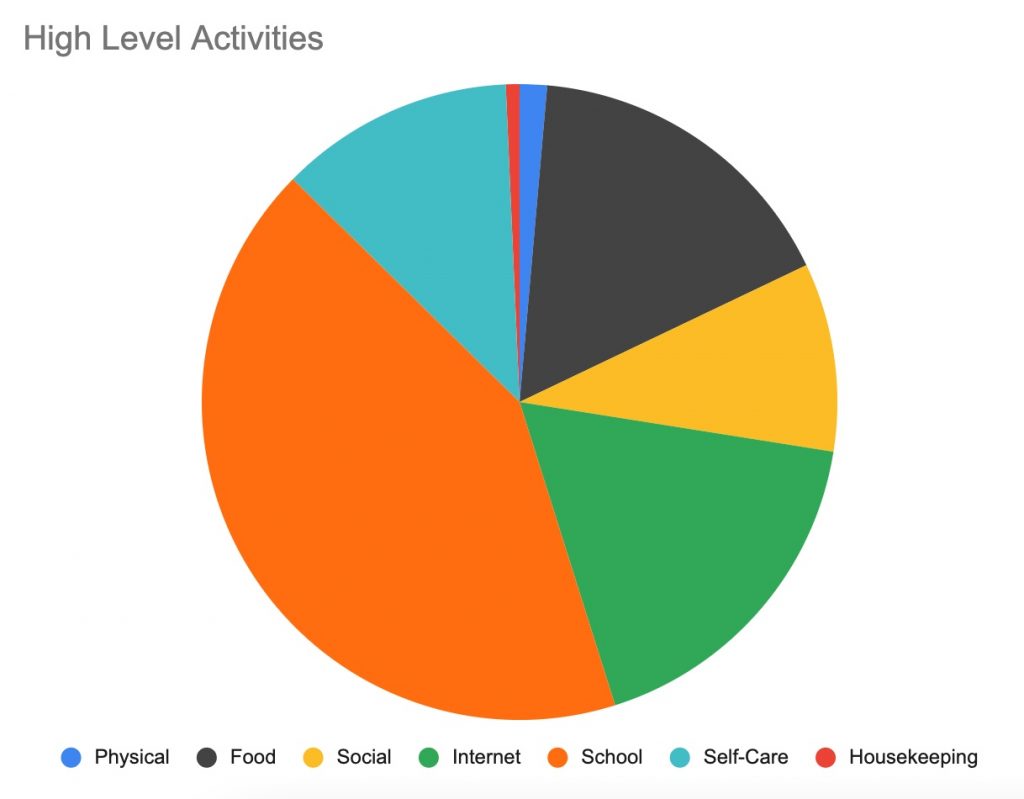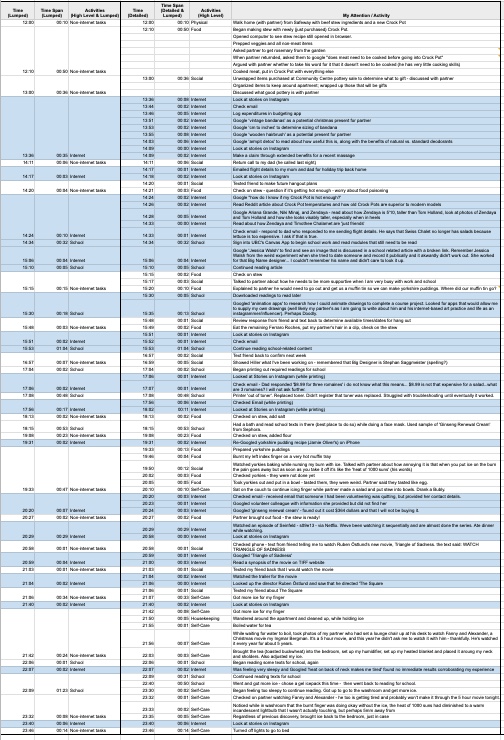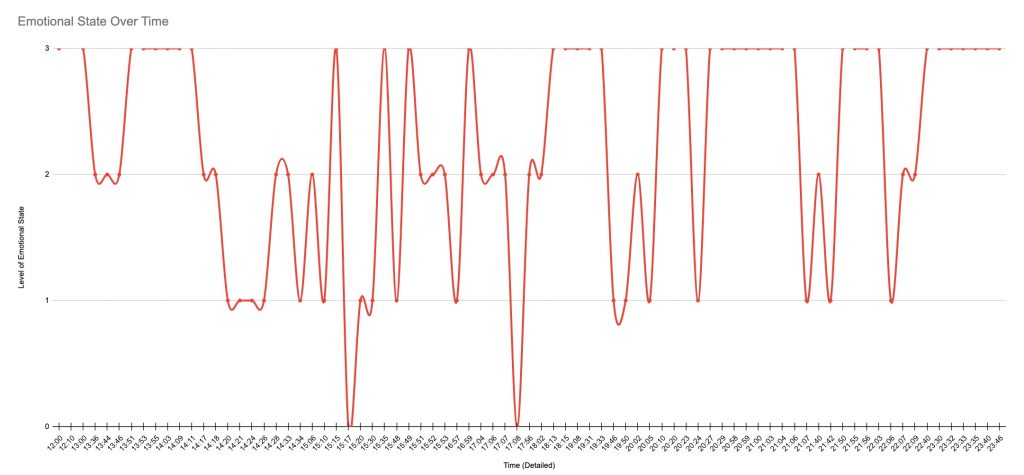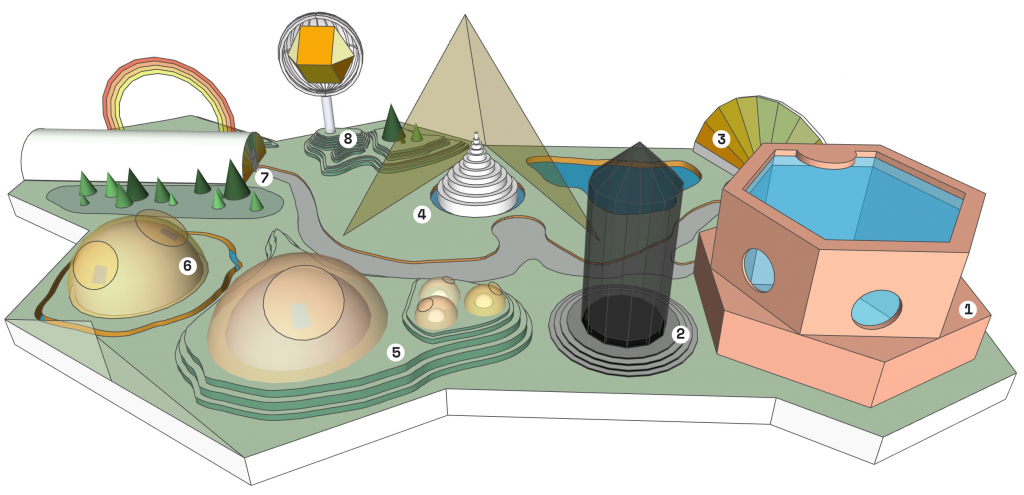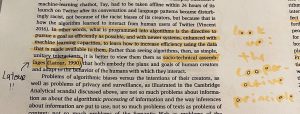Written by Erin Marranca & Noelle Peach
Part 1: Making a case
Workplace Internal Knowledge Base as an Educational Tool
Internal workplace education experiences exist in a variety of formats: onboarding practices, one-on-one or group training sessions, recurrent and just-in-time inhouse eLearning, and special courses where instructors visit the workplace, or staff attend sessions off site – these examples are immediately recognizable workplace learning structures. Yet the importance of having well-organized, easily accessible and centralized internal reference materials such as up-to-date procedures, policies, and quick reference guides is often overlooked. Attran (2019) asserts that, “a large portion of all work today is information work that requires information to be executed, and for which information often determines the outcome of the work” (p.16). Synchronous or event oriented workplace education may introduce new concepts and initiate employee learning, but building the infrastructure to house the reference material will provide a robust and evolving resource for staff to access and reinforce their knowledge. However, as Attran explains, “many enterprises do not consider information as an organizational resource and therefore do not manage it as such (p.16). When workplaces’ internal knowledge bases are intentionally designed and maintained, this information tool can empower employees to initiate their own just-in-time training to activate and satisfy a sense of agency and independently navigate their work life on a daily basis. Throughout this paper, we explore the transformation and usability of workplace internal knowledge bases, first established as physical user manuals or in-house libraries, then displaced through a chaotic adaptation of early electronic document management systems and eventually other modern digital solutions.
Assemblages, Pathways and Usability
In most workplaces procedural documents exist and are actively generated, but the methods used to store and access them can vary drastically, may be numerous, or be dispersed amongst locales. Rolland & Hanseth (2021) suggest we think of these formal and informal methods as assemblages, and explain that this term “refers to how socio-technical entities relate to other entities” (p. 768). When considering internal knowledge bases and modern information management, we can think of inadequate assemblages to be one or a collection of the following: in a physical user manual; collected on an employee’s personal hard drive; in an email folder; in a individual’s training binder; in a limitedly shared digital library used by a select group of individuals. Although the usability of these disconnected assemblages may be perceived as effective for the specific individuals accessing them, their usability from an organizational perspective is significantly lacking as these assemblages do not promote a centralized information source. A centralized and connected digital assemblage promotes consistency of practice when accessing information, allows for streamlined updates, and enables consistent access to information regardless of an employee’s work location, or work status (for example, employee leaves of absence or turnover). Attran (2019) concurs, “an effective digital workplace cannot be merely a combination of existing tools; the workplace must be enhanced by context, structured and unstructured information and consistent coverage of information flows” (p. 18). Digitization affords workplaces the functionality to integrate informational tools for optimum usability, yet if they neglect to invest the required time, staffing, and funding to implement these tools, the users may revert to what they know, which can result in rudimentary usage of sophisticated digital tools that are capable of much more.
Rolland & Hanseth (2021) also present the notion of path theory in their theoretical framework. They explain that, “path dependency refers to a phenomenon where historical contingent events influence present options for change” (p. 768). In other words, former practices evolve and converge over time to form a stable pathway of work and when new methods (paths) are introduced they can be difficult to implement if the former paths are strong or remain stable. In order to promote change, old paths must be destabilized, while the new path is reinforced, promoted and consequently stabilized over time (p. 168). Essentially, new technologies and the ways they are introduced into environments might effectively reconfigure their users (Woolgar, 1990) by anticipating their existing paths, and influencing their actions to direct them toward new paths. When Woolgar (1990) asserts, “the text might be said to be designed (perhaps implicitly, perhaps unconsciously, but always within a context of conventional resources and expectations) for the reader” (p. 69), he is saying that the objects we create are embedded with a purpose, or rather are designed, for a particular use or a particular reading. To take Woolgar’s cue and consider new technologies as text and the reader as user, we can understand that well-written digital technologies are more likely to engage and affect (or configure) the user.
Displacement / Media Convergence
Hinnings et al. (2018) define digital transformation as “the combined effects of several digital innovations bringing about novel actors (and actor constellations), structures, practices, values, and beliefs that change, threaten, replace or complement existing rules of the game within organizations, ecosystems, industries or fields” (p. 52). Inconsistently executed digital transformation has led many workplaces to operate in unintentionally hybrid environments that ultimately result in the multiplication of numerous assemblages of internal knowledge bases (Organisciak, 1999). Initially, our focus was to look at internal knowledge bases and the displacement of the paper-based user manual by digital reference library, yet our research revealed that this displacement is not an event that happened swiftly and cleanly, but is instead ongoing and messy; an entanglement of past methods, legacy systems, new technology, digitization, stabilized and destabilized pathways, varying levels of skills and expertise, funding considerations, multigenerational user configurations and hybrid working environments. This displacement is reflective of the fluctuating and complex nature of media convergence.
At varying degrees, both authors of this paper actively experience the chaos and disorganization of our respective workplace electronic document management systems, yet to focus our exploration outside of anecdote and personal experience, this paper centers around the 6-year transformation of practice documented by Rolland & Hanseth in their 2021 longitudinal case study of a mid-sized oil company’s shift to a centralized document management system using Microsoft SharePoint. For privacy reasons, in their writings they dubbed this company GlobalOil. We chose this example as we found it most closely represented our own experiences in that the document management practice is focused on internal information usage, as opposed to client facing purposes. Additionally, SharePoint is a system we both have experience using, as it is commonly adopted in government and educational work environments that have long standing relationships with Microsoft as an enterprising platform.
Part 2: Connections to Media Convergence & Usability
A Brief Background of Electronic Document Management Systems
A digital transformation has been taking place in document and records management since the 1980s (Adam, 2007). Most of the systems available then were Document Image Processing Systems (DIP) that were structured like electronic filing cabinets. Documents were scanned, indexed, and stored for later retrieval. In the 1990s these systems advanced to include a routing feature that allowed scanned images of documents to be sent to the appropriate staff (Adam, 2007). These more advanced systems, called Electronic Document/Records Management Systems (EDMS/ERMS), could integrate with Microsoft Office and like a library, allowed users to check material in and out while maintaining a versioning control system that kept track of revisions made in the documents. These early systems often managed paper-based documents. So, while the management system was electronic, the documents and records within the system were primarily physical.
The inconsistencies in transforming to an entirely digital document management system arose in the graduated way these systems came to manage electronic records and documents without well-defined standards for compliance (Adam, 2007). Some of the first compliance standards to be applied to digital document management systems came from governments keen to describe and refine their own functional requirements into the early 2000s (Adam, 2007). Education lagged behind government and corporate enterprises and even those education systems in mature, western democracies only began ambitious digitization in the mid-to late 2010s driven by policy opinions that digitization would increase economic productivity (Saari & Santti, 2018). Therefore, the same inconsistencies in the resulting hybrid physical/digital system of documents, images, and even workflows have plagued each group of stakeholders with a patchwork of gradual digital transformation. We further describe this patchwork through the lens of media convergence and usability.
Media Convergence
When reminded that “…the implementation of new technologies doesn’t mean that the old ones simply vanish into dusty museums” (University of Minnesota, 2010), we can visualize a world with diverse and multifaceted forms of media, and this may seem exciting – but when faced with the reality of media convergence in a workplace burdened with heavy workloads, restrictive budgets and “information overload” (Attran, 2019, p. 2), it creates a complex and confusing actuality. In 2001, Henry Jenkins described this time as “…a digital renaissance-a period of transition and transformation that will affect all aspects of our lives…[it] will be the best of times and the worst of times, but a new cultural order will emerge from it”. From our lived experience working in transitional workplaces, it feels as though we are very much in the midst of a dynamic yet volatile period where consistent and efficient streamlined workflows are conceivable but not yet possible. However, Rolland & Hanseth’s (2021) case study presents a scenario that ultimately ends well with stumbling blocks along the way.
Prior to the implementation of SharePoint, GlobalOil stored their internal documentation in various locales, using different practices. Rolland & Hanseth describe their electronic document management methods as “two assemblages” (p. 769): The first being through the engineers’ design software, which had its own archiving functionality for technical documents, and the second was through a separate enterprise content management system for formal documents. Additionally, staff had their own digital files on servers and some staff kept separate documentation on their laptops (pp. 669-770). Although the text does not further detail places information may be housed, (for example, did the staff have any paper manuals clipped into binders? Were there important notices that only existed within email? Did anyone keep quick reference guides posted on an office wall?) it is likely that because the case study focused on the management of digital content, they inadvertently presented the assumption that full technological convergence had been achieved at GlobalOil. While this is doubtful, Roland & Hanseth’s (2021) description of GlobalOil’s prior document management highlighted for us that the displacement we are exploring is not as simplistic as one technology replacing another, but rather, a chronographic and exponential multiplication of technologies and practices reflective of users both collectively and individually discovering what new technologies might afford. Rolland & Hanseth describe GlobalOil’s prior document management methods as “fragmented… with considerable path dependency” (p. 77), regardless, shifts in the company’s direction resulted in a requirement to achieve greater compliance in documentation practices, which pushed GlobalOil to implement the use of SharePoint.
Usability
Usability as it relates to electronic document management systems can be broken down into several components. First, we can consider how the system integrates with existing digital infrastructure, physical infrastructure, and workflows. Then, we can consider how the tool or tools employed to construct the system are usable. Finally, we can explore the configuration of users in how users cope with the change to digital document management systems and in ongoing user support. It is worth noting the impetus for such a digital transformation. Above, we mentioned that digitization projects have sometimes occurred due to the perception that such a transformation will improve economic productivity. This is one important catalyst and may help to explain the gradual nature of some of these transformations but in our anecdotal experience, more widespread and sweeping changes that consolidate the shift to digital systems are typically as a result of another high-impact institutional change, or internal/external crisis (Adam, 2007). While we cannot blame only one catalyst for beginning the shift to digital document management, we can certainly point to one as an accelerant that provokes the long awaited adoption of widely available technology that institutions already have access to at the time of crisis. In our case study, GlobalOil’s catalyst was a change in drilling equipment, forcing them to implement a much more regulated program for their technical documentation as a result of changing product standards (Rolland & Hanseth, 2021).
As previously mentioned, GlobalOil implemented their electronic document management system using Microsoft SharePoint. For speed and efficiency, management and the IT department elected to use an out-of-the-box version of SharePoint without additional plugins or other add-ons and special features. One might imagine this as the standard version of SharePoint that as part of MS Office suite, had limited affordances before it could become more customizable for SharePoint users. A substantial challenge that must be addressed when implementing an enterprise platform to serve an entire organization is that from a usability perspective, how will the existing assemblages in the institution a) migrate their documents and b) amalgamate them into the new system. For GlobalOil, these challenges were left to be resolved by the IT department who were forced to rapidly program a customized, more usable version of SharePoint with apps, modules and “related document management practices” (p. 770). If we are concerned with users being configured by a tool, here we might notice that users are not only configured by the system to organize archived information, and initiate taxonomies through the standard versioning control of SharePoint (which, as evidenced by our case, is not something that can be done well in the standard package) but also through the hurried decisions made by a separate IT department in terms of customizable features and decisions made about how to manage the documents themselves. Not only the user, but the information itself is being configured through the defining of document types, metadata for documents and the defining of the organizational structure of information and how workflows are integrated (Adam, 2007). Users are then configured to treat their information in the way prescribed by the tool, and the IT department’s configuration of the tool. The way the newly implemented SharePoint was disseminated through the company, was to push the tool to other ‘user communities’ and then to provide robust training courses on using the tool (Rolland & Hanseth, 2021). The organization employed a top-down approach which validates our view that users were being configured by the tool, the IT-modified version of the tool, the IT-defined taxonomies, and the IT training, rather than allowing the users at any point to configure SharePoint themselves, or participate in any configuration activity.
With regard to the usability of the SharePoint platform, like we have experienced in our workplaces, GlobalOil needed to migrate the documents from older versions of SharePoint (2007) to newer versions of SharePoint (2010) in order to take advantage of the tool’s updated affordances (Rolland & Hanseth, 2021). GlobalOil implemented a hybrid system that retained elements of the older version of SharePoint and amalgamated them with elements from the new version. One of the usability-related affordances of the new version of SharePoint was a feature that integrated the platform into GlobalOil’s existing digital infrastructure via an Active Directory which gave users access to the documents and document libraries that were relevant to them (Rolland & Hanseth, 2021). In another effort to improve usability, the IT team developed a set of features exclusively for the engineering team to provide them with equipment insights. As the platform improved, GlobalOil saw increasing use of SharePoint among employees pointing to the displacement of older systems in favor of the newer one. This use continued to consolidate through other version updates (from 2010 to 2013 versions) and as the versions’ usability improved.
In summary, from approximately 2009 until 2015, GlobalOil displaced its previous document management systems with a centralized system that included a more comprehensive set of features for digital document management. By looking at the transition to SharePoint through the lens of media convergence and usability, we have described the stages and elements of this transition. Much of this transition feels familiar as SharePoint has become a nearly ubiquitous tool for hosting digital document libraries for government, industry, and educational institutions. In the final section, we describe where this transformation failed and succeeded by reconsidering media convergence and usability more critically.
Part 3: Critical Analysis
A key difficulty that presented itself in the described action taken at GlobalOil to move toward a digital document system was user buy-in and uptake. It took until the second-to-last documented version of SharePoint (2013) in order for the last group of employees to willingly engage with the new system, on the new platform (Rolland & Hanseth, 2021). In other words, it was a two-year transition to get all users using the platform. For such a large transition, this timeline seems reasonable, however we believe that if the company had considered its users more carefully, they might have avoided some of the challenges in this process. This echoes one of our own experiences at a Canadian higher educational institution in which the flow of information, condition of the information architecture, and buy-in of users to the digital document management system has been uneven, confusing, and unnecessarily difficult. This section will discuss a set of issues through the lenses of path dependence, assemblages, media convergence and usability that may shed insight on why users might hesitate to adopt these new systems.
Culture Change and Change Management
An additional aspect of the system transformation at GlobalOil to consider is change management. In the initial stages, implementing such a system is a vast shift in thinking and working for an organization. GlobalOil had a set of pre-existing systems before implementing SharePoint including the sub-assemblages of DocuShare and SolidWorks, but the shift to a company-wide system entirely on SharePoint was still a significant shift. The process of getting users on board with SharePoint involved destabilizing the prior assemblages and merging them into an integrated assembly and onto a new path in document management (Rolland & Hanseth, 2021). As we discussed above, the catalyst for this change was the implementation of new drilling equipment and therefore a greater need to organize, host, and share technical documentation. The first two years of this transition were considered failures for GlobalOil as the company was unable to shift users away from the existing system and onto the new one (Rolland & Hanseth, 2021). In their description of the system design and who considered its affordances, Rolland and Hanseth describe very little about the users themselves aside from identifying the groups of users who would not make the switch to SharePoint. It is apparent that the company did not pay enough attention to re-configuring users’ expectations of the system and even the ways in which they consider and work with information at the beginning of the transformation process (Adam, 2007). Failing to consider the user and their reliance on previously established paths meant that GlobalOil had to re-evaluate its intended configuration of SharePoint and scramble to customize it appropriately for GlobalOil’s specific users.
Changes to the Digital System
The failure to consider the user described above leads us to discussing media convergence. This process was not only about digital transformation from paper to an electronic management system. Rather, this was a convergence of (likely) paper-based assets, prior electronic systems that had become obsolete, and different versions of the very platform GlobalOil was shifting toward. Regarding usability, not all units at GlobalOil required the same organizational structure for SharePoint, nor were any individual units consulted. The out-of-the-box version of SharePoint originally implemented could not meet all of the user needs from each unit forcing management to pause the digital transformation until adjustments, modifications, and a re-thinking of the technological affordances of the basic SharePoint platform could be accomplished (Rolland & Hanseth, 2021). At no point was it described that users were consulted about their needs and in what ways the system should be configured to meet them. This top-down approach imagined users as empty vessels waiting to be configured by the affordances of the tool as designed rather than imagining them as actors with ideas of their own around configuration. This caused further user resistance and a scramble to manage the convergence of prior systems into one.
Document Types and Organization
Finally, we make the argument here that SharePoint is not the only tool configuring the user. We believe that the way SharePoint allows users to organize information and tag it for retrieval also configures users’ understanding of the information itself. How each unit within the company organizes itself and its information architecture in the decentralized assemblages was potentially more participatory. The users in the unit might have been afforded opportunities to organize, title, tag, and connect content in a local way suitable for the individual unit. Using SharePoint’s more centralized system with only one way of organizing information in a way rejected the cultural convergence that comes with media convergence. Rather than having a say in how information is organized and tagged, users were forced onto a centralized system that initially had no customizable options for user groups that required the tool to have different affordances. Once in-house apps and features were developed specifically for groups of users, they were much more willing to engage with the new system (Rolland & Hanseth, 2021). We argue that by generating user input, or surveying how users were engaging with the prior set of assemblages and paths, the implementation team would have had a much better idea of the kinds of usability requirements necessary to meet the needs of the whole company (Issa & Isaias, 2015).
Conclusion
Given the chaotic nature of the first two years in the transition to the SharePoint platform, the displacement to one, centralized electronic document management system was successful. As reported above, the eventual result was the buy-in from even the most hesitant of the company’s users (the engineers). If the implementation had considered users more carefully, both from a user experience perspective and from a perspective of collaboration and generation, then the transition might have been much smoother. In this case study we have examined the transition of one company’s document management system to an electronic enterprise platform. During the transition time and after, the impact in employees’ work was likely evident in low morale, low productivity, and in general confusion and resentment (Adam, 2007). Having worked with poorly organized document management systems ourselves, we can also confirm the kinds of effects they can have on one’s work.
Last, given the complexity of moving to large digital systems that are organization-defining, it might be advisable to bring in the new system after training, not before, so users are ‘configured’ if you will, to understand the affordances of the system, how to interact with the system, and how the system interacts with their existing workflow before the system goes live. In this type of media convergence, shifts and changes must be supported if users are going to invest in the system and understand how it works.
References
Adam, A. (2007). Implementing electronic document and record management systems. Auerbach Publications.
Attaran, M. (2019). Increasing productivity in the information age. Industrial Management, 61(1), 16-21.
Boys, J. (2022). Exploring Inequalities in the Social, Spatial and Material Practices of Teaching and Learning in Pandemic Times. Postdigital Science and Education, 4(1), 13-32.
Hinings, B., Gegenhuber, T., & Greenwood, R. (2018). Digital innovation and transformation: An institutional perspective. Information and Organization, 28(1), 52-61.
Issa, T., & Isaias, P. (2015) Usability and human computer interaction (HCI). Sustainable Design (pp. 19-35). Springer, London.
Organisciak, P., Shetenhelm, S. Vasques, D. F. A. & Matusiak, K. (1999). Characterizing same work relationships in large-scale digital libraries. In N. G. Taylor, C. Christian-Lamb, M. H. Martin, & B. Nardin (Eds.), Information in Contemporary Society. Springer.
Rolland, K. H., & Hanseth, O. (2021). Managing path dependency in digital transformation processes: a longitudinal case study of an enterprise document management platform. Procedia Computer Science, 181, 765-774.
Saari, A., & Santti, J. (2018). The rhetoric of the ‘digital leap’ in Finnish educational policy documents. European Educational Research Journal, 17(3), 442-457.
University of Minnesota Libraries Publishing. (2010). Understanding media and culture: An introduction to mass communication. https://open.lib.umn.edu/mediaandculture/chapter/1-4-convergence/
Woolgar, S. (1990). Configuring the user: The case of usability trials. The Sociological Review, 38(1_Suppl), 58-99.

